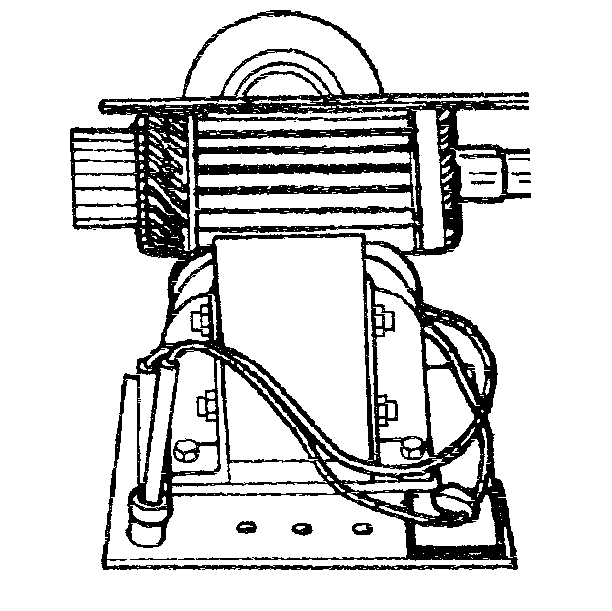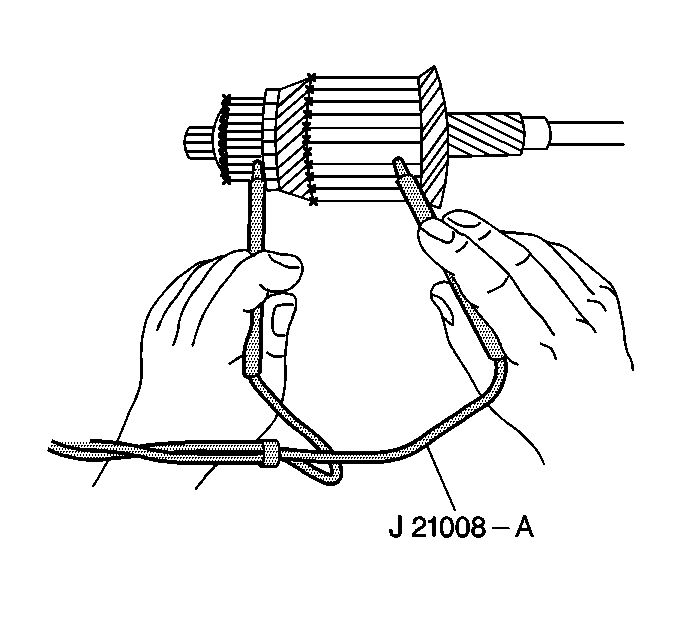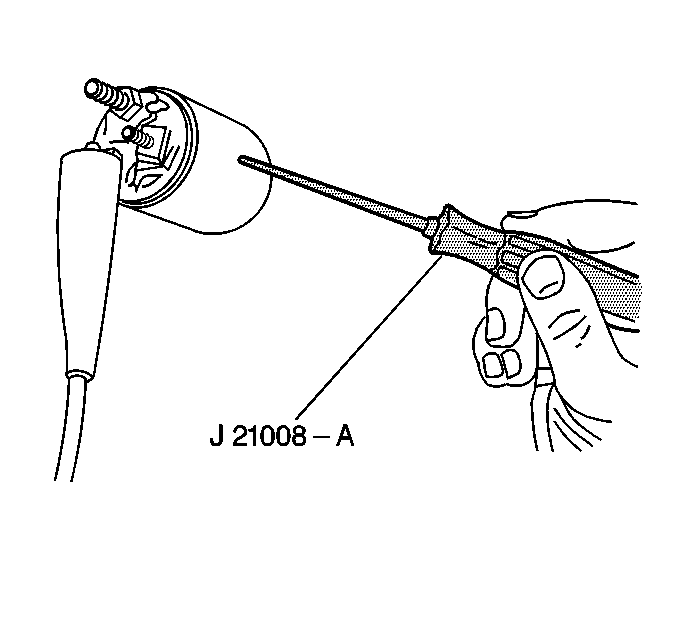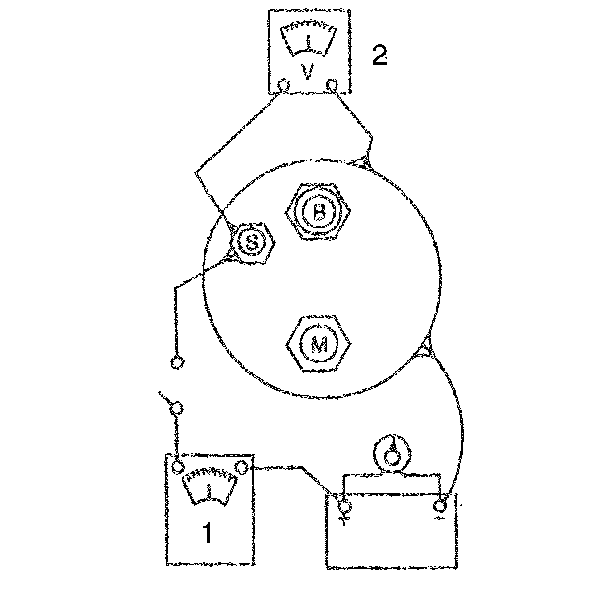Starter Inspection SD Series
Cleaning, Inspection and Electrical Tests
Notice: Do not clean the starter motor parts in a degreasing tank. Soaking parts
will dissolve the permanent lubrication and may damage the electrical
insulation. This will shorten starter motor life.
- Clean all parts by wiping with a clean cloth.
- Inspect the bushing or armature bearing fit in the drive end frame,
the lever housing, and the drive end frame housing. If the bushings or bearings
are damaged or worn, replace them.
| • | Lubricate the bushings before assembling the starter motor. Avoid
excessive lubrication. |
| • | Do not lubricate the roller bearings. They are permanently lubricated. |
- Inspect the armature for runout or scoring. Replace the armature
assembly if the condition of the armature shaft is questionable.
- Inspect the commutator for discolored or uneven conductors.
| • | Do not turn the commutator |
| • | Do not undercut the insulation |
| • | Clean the commutator with 240 grit emery cloth. Blow away any
copper dust present. If the commutator cannot be cleaned, replace the armature. |

- Inspect the armature for
short circuits.
| • | Rotate the armature in a growler with a steel strip such as a
hacksaw blade. Hold the blade on the armature parallel to the shaft. The steel
strip will vibrate when it finds the short circuit. |
| • | Shorts between the commutator bars are sometimes produced by brush
dust or copper dust. |
- Inspect armature for opens.
| • | Look for loose connections where the conductors join the commutator
bars. |
| • | Poor connections cause arcing and burning of the commutator. |

- Inspect the armature for
grounds using a self powered test lamp. If the test lamp lights when one
test probe is placed on the commutator and the other test lamp probe is placed
on the armature core shaft, the armature is grounded. Replace the armature.
- Inspect the brushes for wear. If the brushes are worn to half
the size of a new brush, replace the assembly.
- Inspect the brush holders for dirt or damage. Make sure that the
brushes are not binding in the holders.
- Inspect the brush springs for distortion or discoloring. If the
springs are weak, bent, or discolored, replace the frame and field assembly.
- Inspect the field coils.
| • | Look for burned or damaged insulation, damaged connections or
loose poles. |
| • | If the conditions of the coils is doubtful, replace the field
and frame assembly. |
- Inspect the field coils for grounds.
| • | Connect a self-powered test lamp between the field frame and the
field connector. Make sure the brush ends do not contact the field frame. |
| • | If the test lamp lights, the field coils are grounded. Replace
the field and frame assembly. |
- Inspect the field coils for opens.
| • | Connect a self-powered lamp between the field connector and each
of the brushes. |
| • | If the test lamp does not light at both brushes, the field coils
are open. Replace the frame and field assembly |
- Inspect for field coils for shorts.
| • | Shorts are indicated by poor motor performance after everything
else has been checked out. |
| • | The coils cannot be replaced separately because of the integral
frame construction. The frame and field assembly must be replaced. |
- Inspect the drive assembly (clutch) by turning the drive pinion
in the cranking direction. If the drive pinion turns or slips in the cranking
direction, replace the over-running clutch assembly.

- Inspect the solenoid for
grounds using a self-powered 12 volt test lamp.
| 16.1. | Connect the test lamp between the BAT terminal and the case. The
lamp should not light (terminal should not be grounded). |
| 16.2. | Connect the test lamp between the S terminal and the case. Then
connect the test lamp between the M terminal and the S terminal or between
the M terminal and the case. The lamp should turn on. |
| 16.3. | If the solenoid does not pass these checks, replace it. |
Notice: To prevent overheating of the solenoid pull-in winding, do not leave
the winding energized for more than 15 seconds. The current draw will decrease
as the winding temperature increases.

- Inspect the hold-in winding
and the pull-in winding.
| 17.1. | If the solenoid is not removed from the starter motor, the field
lead must be removed from the terminal on the solenoid before making these
tests. |
| 17.2. | To check both windings, connect an ammeter in series with a 12
volt battery and the switch terminal on the solenoid. Connect
a carbon pile across the battery. Ground the solenoid motor terminal. Adjust
the voltage to 10 volts and note the ammeter reading. It should be 60 to
85 amperes. |
| 17.3. | Note the ampere reading. A high reading indicates a shorted or
grounded winding, and a low reading indicates excessive resistance. |
| • | The resistance of the windings can be read directly using a digital
ohmmeter that can measure tenths of an ohm. |
| • | Coil resistance can be determined by dividing the voltage by the
current (amperes). |




